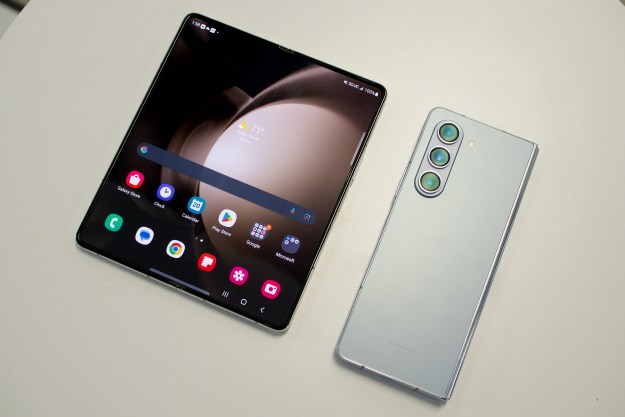Spike Jonze’s new movie Her is getting a lot of buzz. First hailed as the movie where “a guy falls in love with his apartment” (an indirect quote from everyone who saw the trailer), now that it’s out, we’ve learned a lot more. We had the opportunity to watch it earlier this week and aside from the computer on human love story, there’s a lot more to the world Jonze has created. Many subtle pieces of technology and ideas appear throughout the film, and they paint a very positive, plausible world we’d love to live in. Will they come true? We don’t know. We ain’t psychic, mahn. But here are a few particularly compelling advances.
You’ll hire people to write letters for you

There are no cars
You may not notice it the first time you watch, but there are no cars in Her. Theodore walks all around a city that’s a blend between Los Angeles and new Chinese cities, but he never drives. Everyone travels by train or walking. We’d love to see New York in this future. Maybe there’d be enough room to walk through Times Square.
Production Designer K.K. Barrett explained why he eliminated cars in an interview with Fast Company: “One of the first things I said in designing Her was, ‘I don’t want to show any cars.'” says Barrett. “It’s another gesture of going away from technology. When you look at any film from any time period and see a car, you can place it right to the year.”
Desktop computers survive, but sans keyboard

Everything’s red
How this ties into technology, we don’t know, but there is a lot of red in Spike Jonzes’ vision of the future. Our trend toward off colors will continue, but we’ll really begin a love affair with red in all its varieties.
Advertising is classy, but strange
Today’s commercials and ads are annoying and often low-brow, but with Her, Jonze imagines a world where the hip thing to do is release a super interpretive, highly stylized ad that’s open to interpretation. In some sequences, we simply see children running in slow motion. We have to admit, we like these slow ads, but we’re not sure if they’d really work. Perhaps that’s because there is less of it. We saw far fewer logos, brand names, and moving ads in Her than we do walking to work each day.
Earpieces are in, but glasses still fall off your face

Video games go holographic
If you’ve always thought your TV was too small and you love the Xbox Kinect, this future is right up your alley. Theodore often goes home to play a video game in the dark. It’s projected into thin air and the visible screen was at least 100 inches diagonally, out-sizing almost any TV today. However, instead of shooting your enemies, it appears to mostly be about exploring and verbal puzzle solving. By moving his hands like a rabbit digging through dirt, Theodore is able to make his character’s legs run. To talk to characters, he actually talks to them. We’re guessing his game is rated M for Mature though. One of the characters he talked to couldn’t stop laying down the F Bombs.
Technology is fashionable and non-distracting

It’s because technology is doing such a good job getting out of the way when we don’t need it that Theodore’s new artificially intelligent OS, Samantha (Scarlett Johansson), is welcome in his life at all. But alas, though a learning OS is part of the future in Her, it comes with far more complexities and unforeseen consequences than much of this idyllic tech. Find out more in our full review.
(Images © Warner Bros. Entertainment Inc.)
